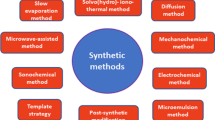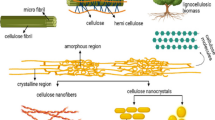Abstract
Nanofiltration (NF) has attracted increasing attention for wastewater treatment and potable water purification. However, the high-efficiency removal of micropollutants by NF membranes is a critical challenge. Owing to the adsorption and subsequent diffusion, some weakly charged or uncharged micropollutants, such as bisphenol A (BPA), can pass through NF membranes, resulting in low removal rates. Herein, an effective strategy is proposed to enhance the BPA removal efficiency of a crosslinked polyaniline/carbon nanotube NF membrane by coupling the membrane with electro-assistance. The membrane exhibited a 31.9% removal rate for 5 mg/L BPA with a permeance of 6.8 L/(m2·h·bar), while the removal rate was significantly improved to 98.1% after applying a voltage of 2.0 V to the membrane. Furthermore, when BPA coexisted with humic acid, the membrane maintained 94% removal of total organic carbon and nearly 100% removal of BPA at 2.0 V over the entire filtration period. Compared to continuous voltage applied to the membrane, an intermittent voltage (2.0 V for 0.5 h with an interval of 3.5 h) could achieve comparable BPA removal efficiency, because of the combined effect of membrane adsorption and subsequent electrochemical oxidation. Density functional theory calculations and BPA oxidation process analyses suggested that BPA was adsorbed by two main interactions: π–π and hydrogen-bond interactions. The adsorbed BPA was further electro-degraded into small organic acids or mineralized to CO2 and H2O. This work demonstrates that NF membranes coupled with electro-assistance are feasible for improving the removal of weakly charged or uncharged micropollutants.

Similar content being viewed by others
References
Abd El-Salam H, Askalany H (2017). Synthesis and characterization of crystalline poly(N-(2-hydroxyethyl)aniline) microspheres. High Performance Polymers, 29(2): 227–236
Cai Y, Wu J, Lu J, Wang J, Zhang C (2022). Fate of microplastics in a coastal wastewater treatment plant: microfibers could partially break through the integrated membrane system. Frontiers of Environmental Science & Engineering, 16(7): 96
Cao X, Luo J, Woodley J M, Wan Y (2016). Bioinspired multifunctional membrane for aquatic micropollutants removal. ACS Applied Materials & Interfaces, 8(44): 30511–30522
Chen J, Huang X, Lee D (2008). Bisphenol A removal by a membrane bioreactor. Process Biochemistry (Barking, London, England), 43(4): 451–456
Chen X, Qiu M, Ding H, Fu K, Fan Y (2016). A reduced graphene oxide nanofiltration membrane intercalated by well-dispersed carbon nanotubes for drinking water purification. Nanoscale, 8(10): 5696–5705
de Grooth J, Reurink D M, Ploegmakers J, de Vos W M, Nijmeijer K (2014). Charged micropollutant removal with hollow fiber nanofiltration membranes based on polycation/polyzwitterion/polyanion multilayers. ACS Applied Materials & Interfaces, 6(19): 17009–17017
Duan W, Ronen A, Walker S, Jassby D (2016). Polyaniline-coated carbon nanotube ultrafiltration membranes: enhanced anodic stability for in situ cleaning and electro-oxidation processes. ACS Applied Materials & Interfaces, 8(34): 22574–22584
Fan X, Zhao H, Liu Y, Quan X, Yu H, Chen S (2015). Enhanced permeability, selectivity, and antifouling ability of CNTs/Al2O3 membrane under electrochemical assistance. Environmental Science & Technology, 49(4): 2293–2300
Frimmel F H (1998). Characterization of natural organic matter as major constituents in aquatic systems. Journal of Contaminant Hydrology, 35(1–3): 201–216
Garcia-Ivars J, Martella L, Massella M, Carbonell-Alcaina C, Alcaina-Miranda M I, Iborra-Clar M I (2017). Nanofiltration as tertiary treatment method for removing trace pharmaceutically active compounds in wastewater from wastewater treatment plants. Water Research, 125: 360–373
Guo H, Deng Y, Tao Z, Yao Z, Wang J, Lin C, Zhang T, Zhu B, Tang C Y (2016). Does hydrophilic polydopamine coating enhance membrane rejection of hydrophobic endocrine-disrupting compounds? Environmental Science & Technology Letters, 3(9): 332–338
Guo H, Li X, Yang W, Yao Z, Mei Y, Peng L E, Yang Z, Shao S, Tang C Y (2022). Nanofiltration for drinking water treatment: a review. Frontiers of Chemical Science and Engineering, 16(5): 681–698
Guo H, Yao Z, Yang Z, Ma X, Wang J, Tang C Y (2017). A one-step rapid assembly of thin film coating using green coordination complexes for enhanced removal of trace organic contaminants by membranes. Environmental Science & Technology, 51(21): 12638–12643
Huang X, Mcverry B T, Marambio-Jones C, Wong M C Y, Hoek E M V, Kaner R B (2015). Novel chlorine resistant low-fouling ultrafiltration membrane based on a hydrophilic polyaniline derivative. Journal of Materials Chemistry. A, Materials for Energy and Sustainability, 3(16): 8725–8733
Jang J H, Woo J Y, Lee J, Han C S (2016). Ambivalent effect of thermal reduction in mass rejection through graphene oxide membrane. Environmental Science & Technology, 50(18): 10024–10030
Jin L M, Yu S L, Shi W X, Yi X S, Sun N, Ge Y L, Ma C (2012). Synthesis of a novel composite nanofiltration membrane incorporated SiO2 nanoparticles for oily wastewater desalination. Polymer, 53(23): 5295–5303
Khoo Y S, Goh P S, Lau W J, Ismail A F, Abdullah M S, Mohd Ghazali N H, Yahaya N K E M, Hashim N, Othman A R, Mohammed A, et al. (2022). Removal of emerging organic micropollutants via modified-reverse osmosis/nanofiltration membranes: A review. Chemosphere, 305: 135151
Kim J H, Park P K, Lee C H, Kwon H H (2008). Surface modification of nanofiltration membranes to improve the removal of organic micro-pollutants (EDCs and PhACs) in drinking water treatment: graft polymerization and cross-linking followed by functional group substitution. Journal of Membrane Science, 321(2): 190–198
Kim S, Chu K H, Al-Hamadani Y A J, Park C M, Jang M, Kim D H, Yu M, Heo J, Yoon Y (2018). Removal of contaminants of emerging concern by membranes in water and wastewater: a review. Chemical Engineering Journal, 335: 896–914
Kimura K, Amy G, Drewes J E, Heberer T, Kim T U, Watanabe Y (2003). Rejection of organic micropollutants (disinfection byproducts, endocrine disrupting compounds, and pharmaceutically active compounds) by NF/RO membranes. Journal of Membrane Science, 227(1–2): 113–121
Kuramitz H, Matsushita M, Tanaka S (2004). Electrochemical removal of bisphenol A based on the anodic polymerization using a column type carbon fiber electrode. Water Research, 38(9): 2331–2338
Kuramitz H, Nakata Y, Kawasaki M, Tanaka S (2001). Electrochemical oxidation of bisphenol A: application to the removal of bisphenol A using a carbon fiber electrode. Chemosphere, 45(1): 37–43
Liu Y, Liu H, Zhou Z, Wang T, Ong C N, Vecitis C D (2015). Degradation of the common aqueous antibiotic tetracycline using a carbon nanotube electrochemical filter. Environmental Science & Technology, 49(13): 7974–7980
Liu D, Cabrera J, Zhong L, Wang W, Duan D, Wang X, Liu S, Xie Y (2021). Using loose nanofiltration membrane for lake water treatment: a pilot study. Frontiers of Environmental Science & Engineering, 15(4): 69
Loh X X, Sairam M, Bismarck A, Steinke J H G, Livingston A G, Li K (2009). Crosslinked integrally skinned asymmetric polyaniline membranes for use in organic solvents. Journal of Membrane Science, 326(2): 635–642
Muhamad M S, Salim M R, Lau W J, Yusop Z (2016a). A review on bisphenol A occurrences, health effects and treatment process via membrane technology for drinking water. Environmental Science and Pollution Research International, 23(12): 11549–11567
Muhamad M S, Salim M R, Lau W J, Yusop Z, Hadibarata T (2016b). The removal of bisphenol A in water treatment plant using ultrafiltration membrane system. Water, Air, & Soil Pollution, 227(7): 250
Nghiem L D, Schäfer A I, Elimelech M (2004). Removal of natural hormones by nanofiltration membranes: measurement, modeling, and mechanisms. Environmental Science & Technology, 38(6): 1888–1896
Nghiem L D, Schäfer A I, Elimelech M (2006). Role of electrostatic interactions in the retention of pharmaceutically active contaminants by a loose nanofiltration membrane. Journal of Membrane Science, 286(1–2): 52–59
Schäfer A I, Akanyeti I, Semião A J C (2011). Micropollutant sorption to membrane polymers: a review of mechanisms for estrogens. Advances in Colloid and Interface Science, 164(1–2): 100–117
Shin M G, Choi W, Park S J, Jeon S, Hong S, Lee J H (2022). Critical review and comprehensive analysis of trace organic compound (TOrC) removal with polyamide RO/NF membranes: mechanisms and materials. Chemical Engineering Journal, 427: 130957
Tissot G B, Anglada A, Dimitriou-Christidis P, Rossi L, Arey J S, Comninellis C (2012). Kinetic experiments of electrochemical oxidation of iohexol on BDD electrodes for wastewater treatment. Electrochemistry Communications, 23: 48–51
Umar M, Roddick F, Fan L, Aziz H A (2013). Application of ozone for the removal of bisphenol A from water and wastewater: a review. Chemosphere, 90(8): 2197–2207
Wei D, Li J, Chen Z, Liang L, Ma J, Wei M, Ai Y, Wang X (2020). Understanding bisphenol-A adsorption in magnetic modified covalent organic frameworks: experiments coupled with DFT calculations. Journal of Molecular Liquids, 301: 112431
Wei S, Du L, Chen S, Yu H, Quan X (2021). Electro-assisted CNTs/ceramic flat sheet ultrafiltration membrane for enhanced antifouling and separation performance. Frontiers of Environmental Science & Engineering, 15(1): 11
Xue J, Samaei S H-A, Chen J, Doucet A, Ng K T W (2022). What have we known so far about microplastics in drinking water treatment? A timely review Frontiers of Environmental Science & Engineering, 16(5): 58
Yang H, Wang B, Liu J H, Cheng J, Yu L, Yu J, Wang P, Li J R, Su X (2020). Sensitive and selective detection of bisphenol compounds in a fluorescent metal-organic framework. Sensors and Actuators B: Chemical, 314: 128048
Yavuz Y, Koparal A S (2006). Electrochemical oxidation of phenol in a parallel plate reactor using ruthenium mixed metal oxide electrode. Journal of Hazardous Materials, 136(2): 296–302
Yu L, Cheng J, Yang H, Lv J, Wang P, Li J R, Su X (2021). Simultaneous adsorption and determination of bisphenol compounds in water medium with a Zr(IV)-based metal-organic framework. Microchimica Acta, 188(3): 83
Zaky A M, Chaplin B P (2014). Mechanism of p-substituted phenol oxidation at a Ti4O7 reactive electrochemical membrane. Environmental Science & Technology, 48(10): 5857–5867
Zhang H, Quan X, Fan X, Yi G, Chen S, Yu H, Chen Y (2019). Improving ion rejection of conductive nanofiltration membrane through electrically enhanced surface charge density. Environmental Science & Technology, 53(2): 868–877
Zhang J, Shu D, Zhang T, Chen H, Zhao H, Wang Y, Sun Z, Tang S, Fang X, Cao X (2012). Capacitive properties of PANI/MnO2 synthesized via simultaneous-oxidation route. Journal of Alloys and Compounds, 532: 1–9
Zhang Y, Causserand C, Aimar P, Cravedi J P (2006). Removal of bisphenol A by a nanofiltration membrane in view of drinking water production. Water Research, 40(20): 3793–3799
Zhang Y, Pagilla K (2010). Treatment of malathion pesticide wastewater with nanofiltration and photo-Fenton oxidation. Desalination, 263(1–3): 36–44
Zhao B, Neoh K G, Kang E T, Tan K L (2000). Concurrent N-alkylation and doping of polyaniline by alkyl halides. Chemistry of Materials, 12(6): 1800–1806
Acknowledgements
This work was supported by the National Key Research and Development Program of China (No. 2020YFA0211001), the National Natural Science Foundation of China (Nos. 22106017 and 52100074), the China Postdoctoral Science Foundation (No. 2022M710583), and the Programme of Introducing Talents of Discipline to Universities (China) (No. B13012).
Author information
Authors and Affiliations
Corresponding author
Additional information
Highlights
• A crosslinked polyaniline/carbon nanotube NF membrane was fabricated.
• Electro-assistance enhanced the removal rate of the NF membrane for bisphenol A.
• Intermittent voltage-assistance can achieve nearly 100% removal of bisphenol A.
• Membrane adsorption—electro-oxidation process is feasible for micropollutant removal.
Supporting Materials
Rights and permissions
About this article
Cite this article
Zhang, H., Du, L., Xing, J. et al. Electro-conductive crosslinked polyaniline/carbon nanotube nanofiltration membrane for electro-enhanced removal of bisphenol A. Front. Environ. Sci. Eng. 17, 59 (2023). https://doi.org/10.1007/s11783-023-1659-3
Received:
Revised:
Accepted:
Published:
DOI: https://doi.org/10.1007/s11783-023-1659-3




